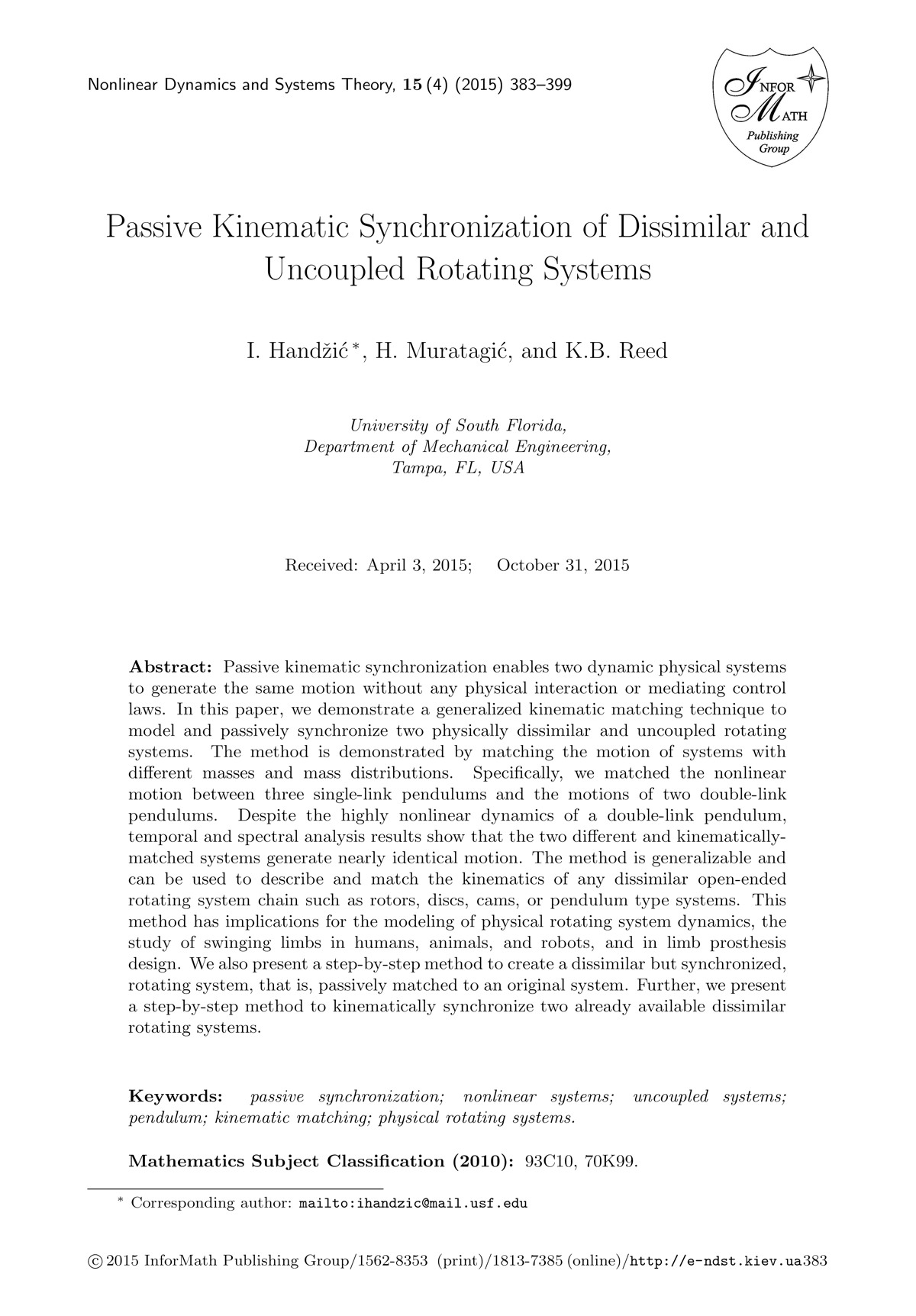|
|
Passive Kinematic Synchronization of Dissimilar and Uncoupled Rotating Systems
Abstract - Passive kinematic synchronization enables two dynamic physical systems to generate the same motion without any physical interaction or mediating control laws. In this paper, we demonstrate a generalized kinematic matching technique to model and passively synchronize two physically dissimilar and uncoupled rotating systems. The method is demonstrated by matching the motion of systems with different masses and mass distributions. Specifically, we matched the nonlinear motion between three single-link pendulums and the motions of two double-link pendulums. Despite the highly nonlinear dynamics of a double-link pendulum, temporal and spectral analysis results show that the two different and kinematically- matched systems generate nearly identical motion. The method is generalizable and can be used to describe and match the kinematics of any dissimilar open-ended rotating system chain such as rotors, discs, cams, or pendulum type systems. This method has implications for the modeling of physical rotating system dynamics, the study of swinging limbs in humans, animals, and robots, and in limb prosthesis design. We also present a step-by-step method to create a dissimilar but synchronized, rotating system, that is, passively matched to an original system. Further, we present a step-by-step method to kinematically synchronize two already available dissimilar rotating systems.
[ pdf ]

|





